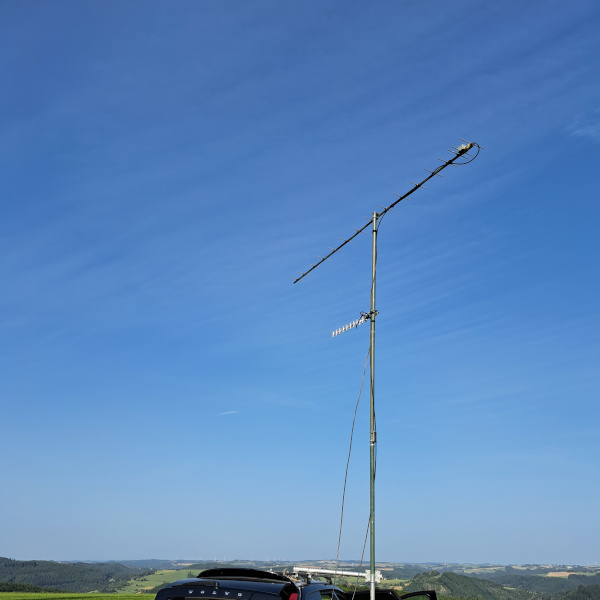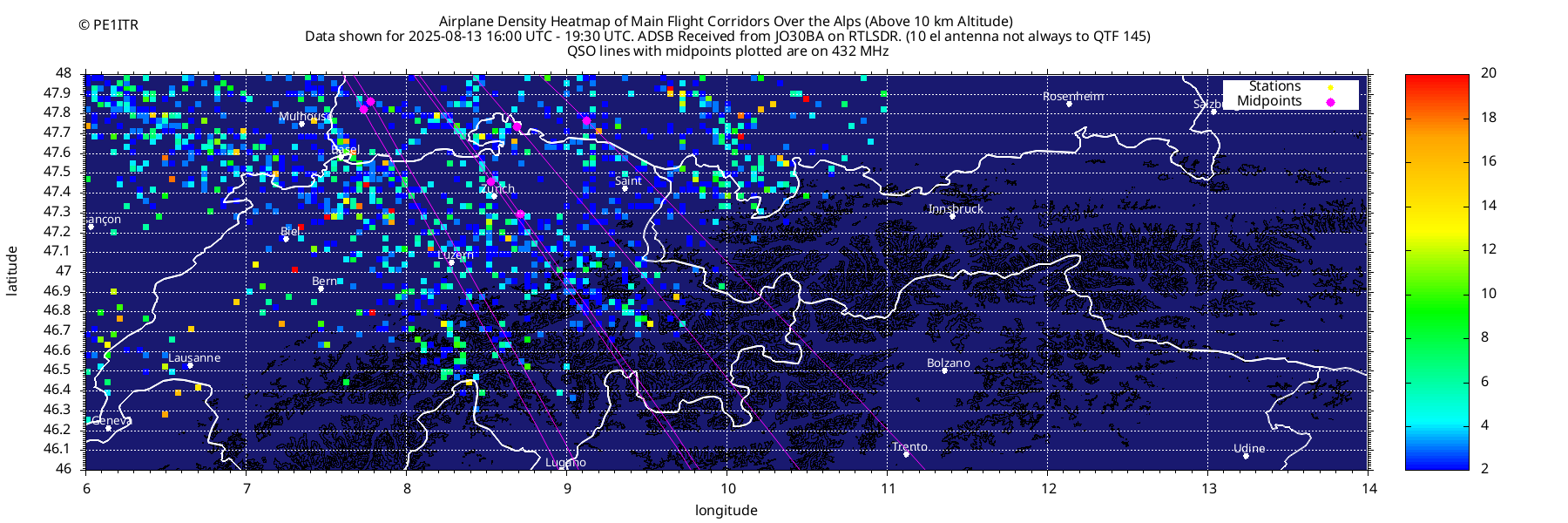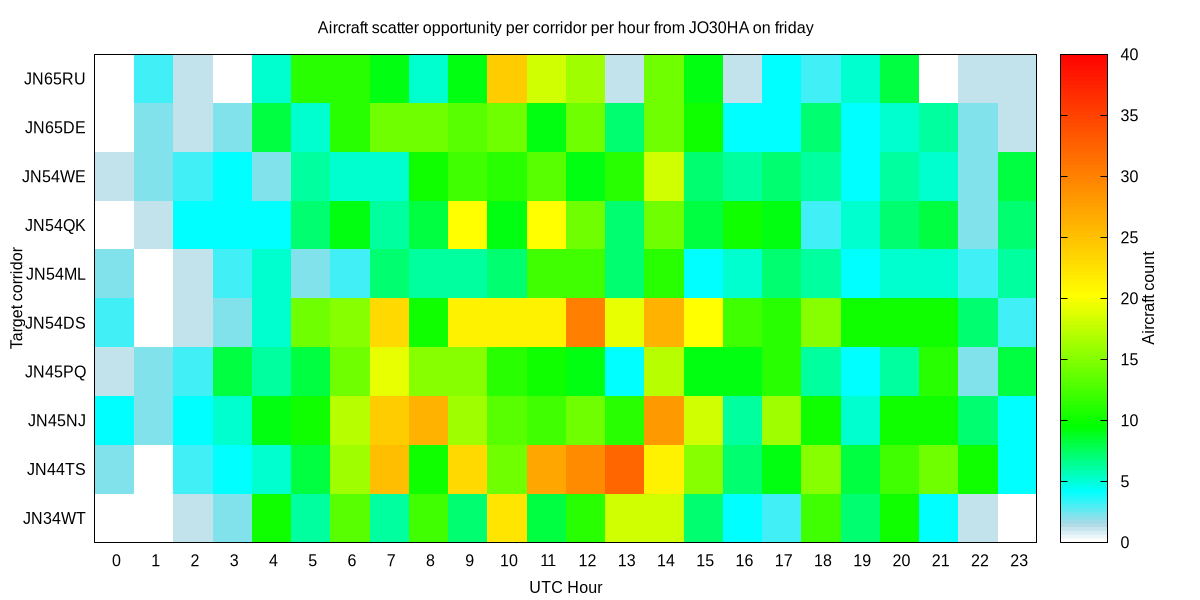
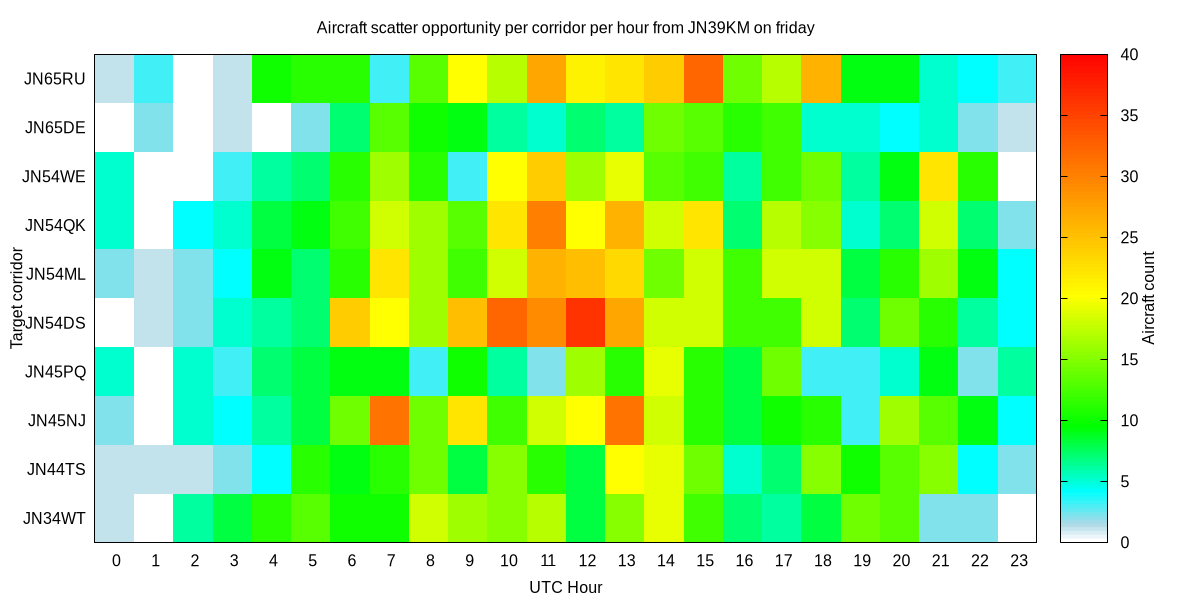
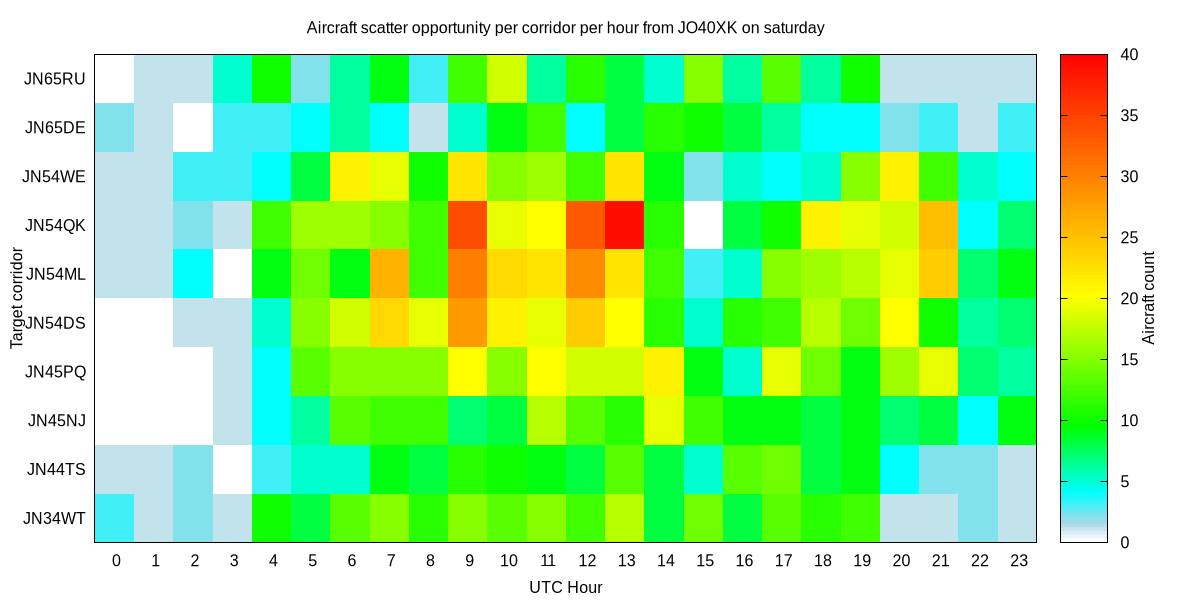


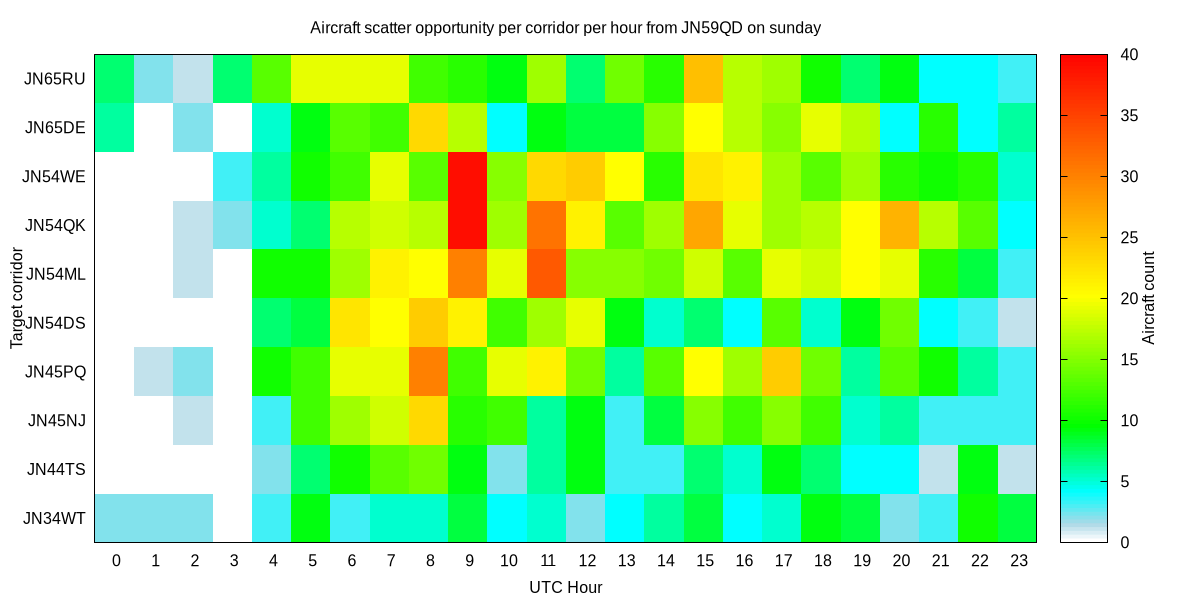

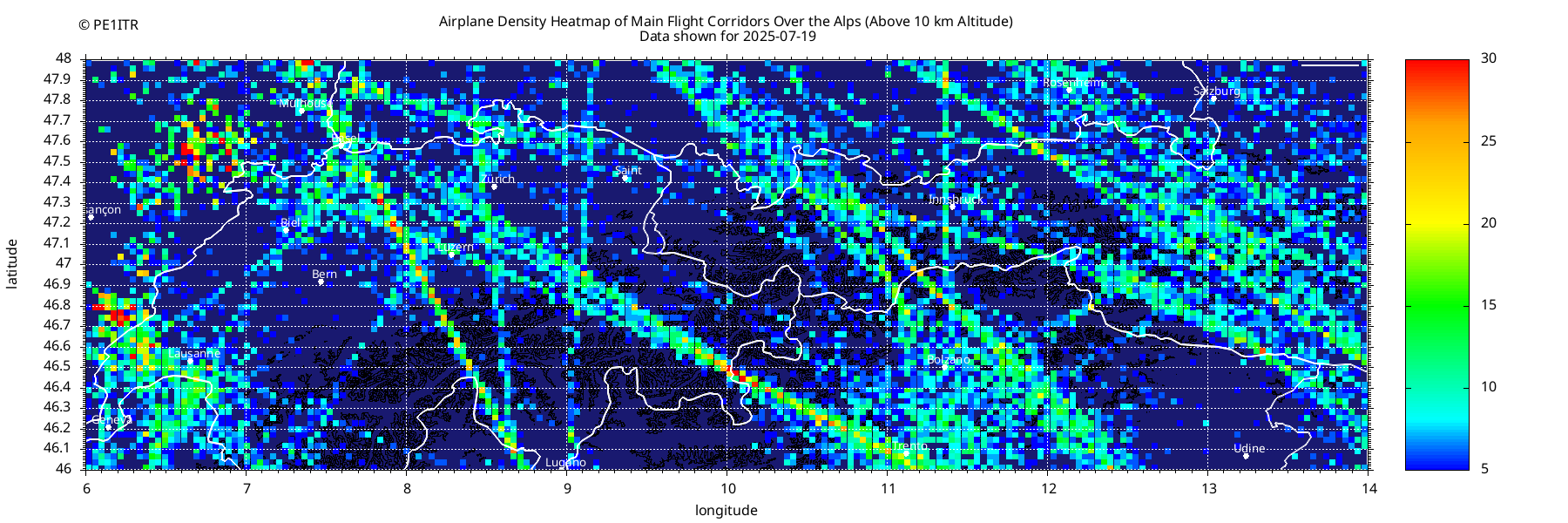
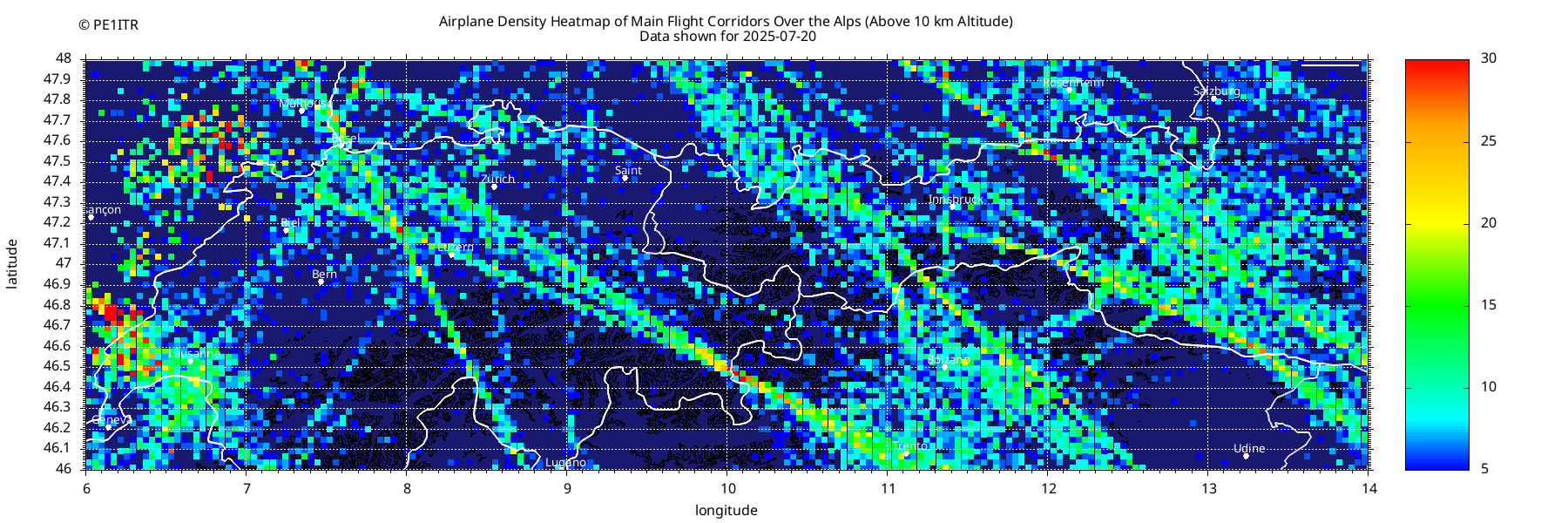
| Main Square | Day of Week | 1st, 2nd and 3rd best sub square |
|---|---|---|
| JO30 | Friday | JO30HA (163), JO30AB (157), JO30AC (154). |
| JN39 | Friday | JN39KM (200), JN39HP (192), JN39LN (190). |
| JO40 | Saturday | JO40XK (178), JO40XL (172), JO40XM (172). |
| JN49 | Saturday | JN49AA (185), JN49BA (182), JN49CA (171). |
| JO50 | Sunday | JO50LG (186), JO50LF (182), JO50LE (181). |
| JN59 | Sunday | JN59QD (169), JN59QU (169), JN59IW (168). |

| 1st best sub square | Graph |
|---|---|
| JO30HA |

|
| JN39KM |

|
| JO40XK |

|
| JN49AA |

|
| JO50LG |

|
| JN59QD |

|
